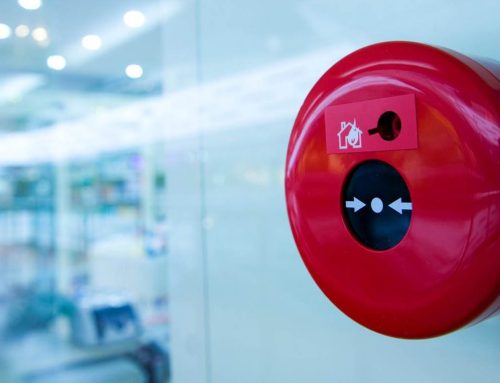It wasn’t immediately clear Wednesday why the smoke alarms didn’t sound in a Philadelphia house fire that killed 12 people, including eight children.
There were four smoke detectors in the building but none operated properly during the incident, Philadelphia First Deputy Commissioner Craig Murphy said. The alarms had been inspected annually, and at least two had been replaced in 2020, with batteries replaced in the others at that time, Philadelphia Housing Authority officials said. According to the Philadelphia Housing Association, which owned the building, the smoke detectors were in working order at the time of the most recent inspections in April and May of 2021.
“This unimaginable loss of life has shaken all of us,” PHA President Kelvin Jeremiah said. “It is too early for us to say more.”
From batteries that have been accidentally dislodged to electrical failures, there are several reasons a smoke alarm might not sound, National Fire Protection Association Communications Manager Susan McKelvey said.
“You need proper detection to be alerted to a fire to get out safely,” she said.
Neighbors Eleanora Barbieri and Luis Luciano said on Wednesday’s “NewsNation Prime” that PHA can be slow to respond to tenant requests, and there have been issues reaching public safety from that community.
According to National Fire Protection Association research, the risk of dying in reported home structure fires is 55 percent lower in homes with working smoke alarms than those without them or with alarms that don’t work.
Power source issues are the most common factors when smoke alarms fail to operate.
Although McKelvey couldn’t speak directly about the Philadelphia rowhouse fire, the “tragedy” reinforces the importance of fire safety, which she said goes beyond checking the batteries in a smoke detector.
“Today’s home fires burn faster than ever for a variety of reasons, but at the end of the day, you may have as little as one to two minutes to get out safely from the time the smoke detector sounds,” McKelvey said.
When they catch fire, the synthetic products and furniture in modern houses create a toxic black smoke that makes it hard to both see and breathe, she said. Large, open spaces and cathedral ceilings also mean houses today burn faster than they used to.
And while the number of fires in homes has continued to decline, the fire death rate has remained stagnant in recent years, McKelvey said.
In fact, occupants are more likely to die in a home fire now than they were 40 years ago.
“We’re doing better at preventing fires from happening but when they do happen, people are still struggling to get out safely.”
A total 26 people lived in the Philadelphia duplex in the 800 block of North 23rd Street, Murphy said. That includes 18 people who were staying in the upstairs apartment on the second and third floors, and eight staying in the downstairs apartment, which included the first floor and part of the second floor, he said.
A spokesperson for Philadelphia’s Department of Licenses and Inspections said the city does not limit the number of family members who can stay in a single unit, and the mayor said people should withhold judgment.
“You don’t know the circumstances of each and every family, and maybe there were relatives and family that needed to be sheltered,” Kenney said. “Obviously, the tragedy happened, and we all mourn for it. But we can’t make a judgment on the number of people living in the house because sometimes, people just need to be indoors.”
The NFPA recommends that families create and practice a fire escape plan to ensure preparedness.
The Philadelphia fire remains under investigation and victims’ names have not been released.






